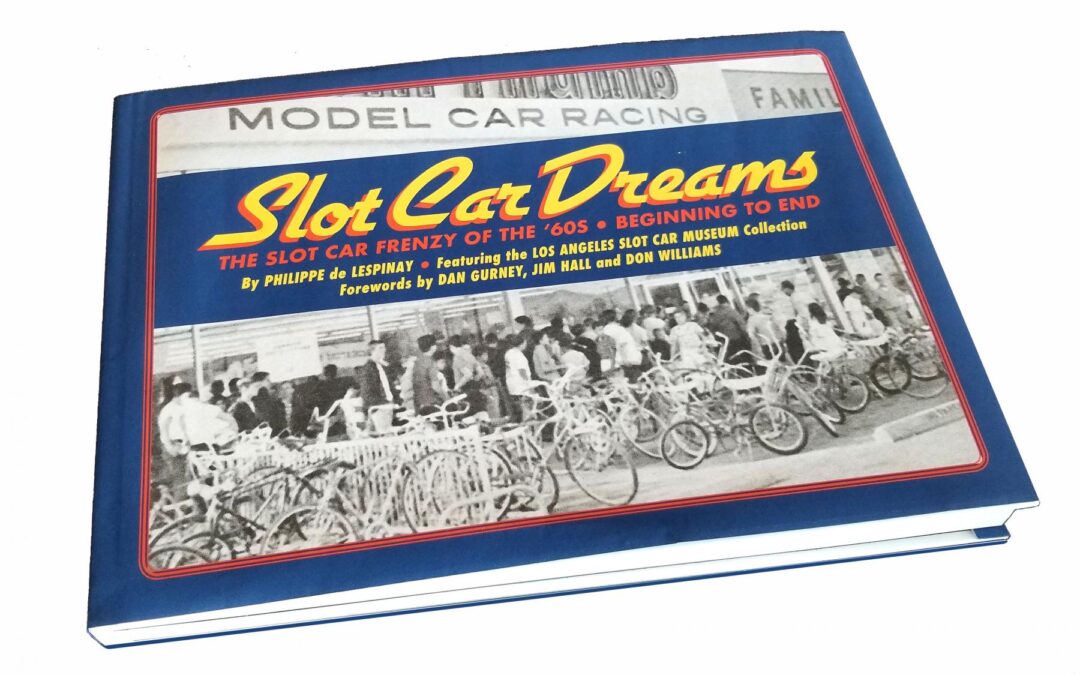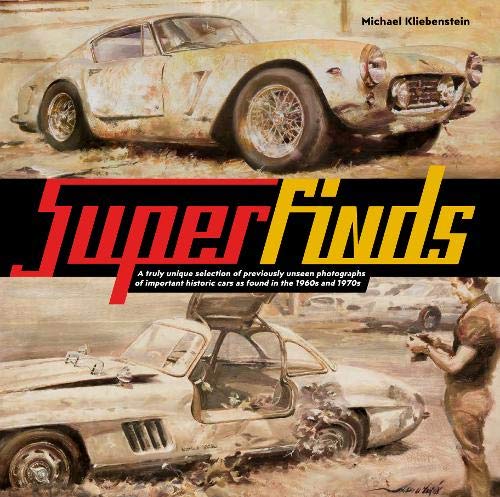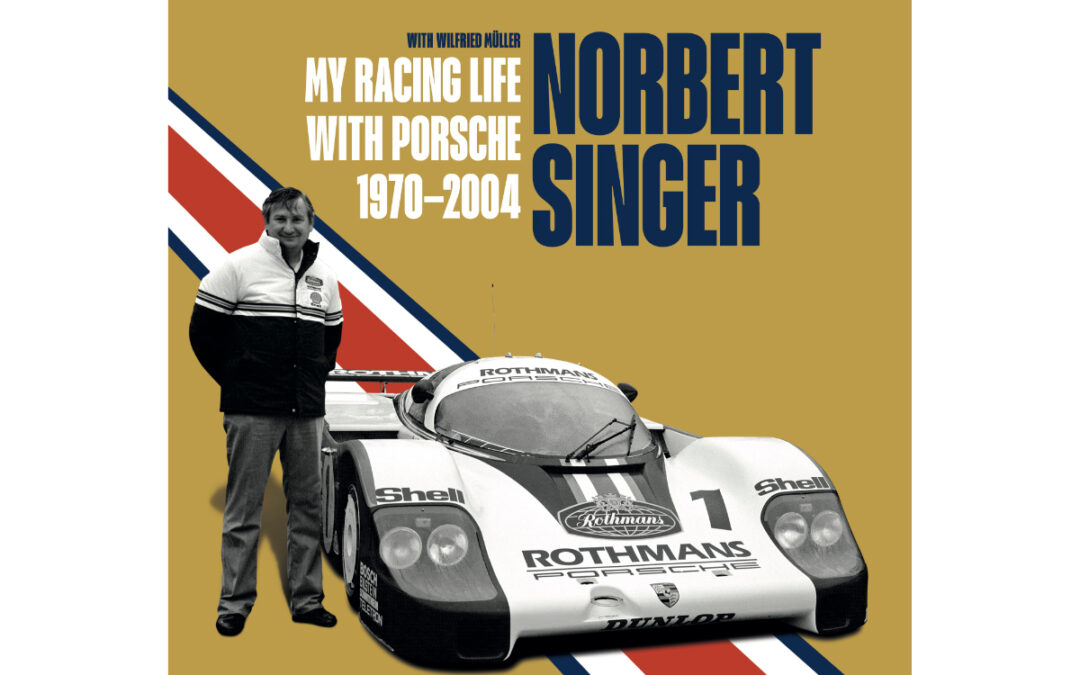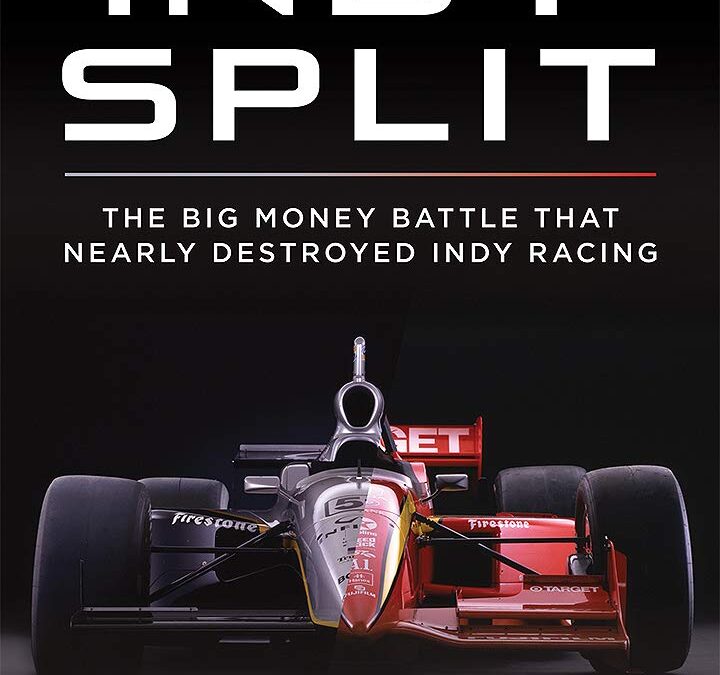
Indy Split is a fascinating, authoritative and overdue account of the big money battle that nearly destroyed the sport of Indy car racing.
In the new book, long-time motorsports reporter John Oreovicz dives deep into the divisive battle between CART and the Indy Racing League. With insightful reporting, Oreovicz recounts the political infighting within the industry which climaxed with a 12-year “Split” from 1996 to 2007 between competing forms of Indy car racing and prevented the sport from achieving its potential.
The book traces the roots of Indy car racing’s dysfunction, which began in 1945 when Tony Hulman rescued the Indianapolis Motor Speedway from potential redevelopment. Over the next 75 years, the Hulman-George family used the stature of the Speedway to carve out a powerful position in American auto racing that sometimes resulted in conflict with Indy car competitors. A volatile period in the late 1970s sparked the formation of Championship Auto Racing Teams (CART), and tensions ramped up even more when Hulman’s grandson, Tony George, assumed power in 1990.
In unprecedented detail, Indy Split uncovers how the Split forced Indy car fans, sponsors, broadcasters and participants to choose sides. The book brings to light the confusion and animosity which caused unnecessary damage to the sport, and covers how negotiations driven by legendary racer Mario Andretti and actor/racer Paul Newman ended the Split in 2008, only to have George to walk away less than three years later. The long struggle for stability was finally resolved in 2020 when Roger Penske acquired IMS and the IndyCar Series, securing a bright future for the Speedway, the Indy 500, and the sport.
Longtime motorsports reporter John Oreovicz began attending the Indianapolis 500 as a teenager in the late ‘70s, allowing him to witness the sport’s growth as an avid fan before documenting its decline as a journalist. With a foreword by Motorsport Hall of Fame inductee Robin Miller, arguably Indy car racing’s most vocal advocate, this is the real story of The Split from one of the sport’s most respected voices
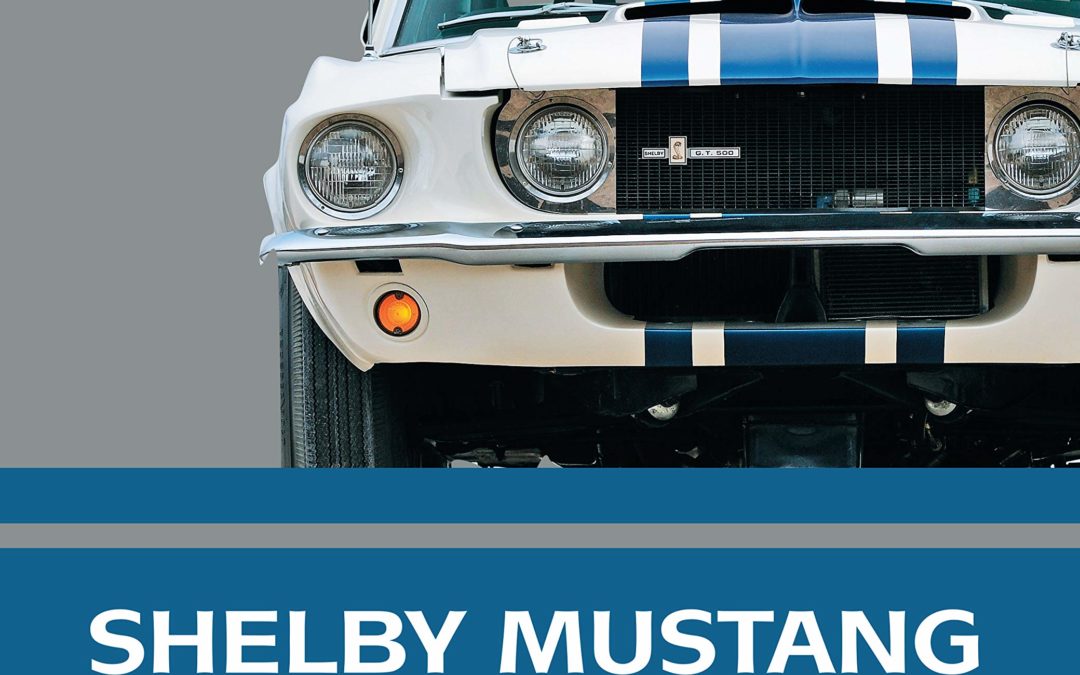
Shelby Mustang details the entire story of these fantastic cars, from the early prototypes built in Shelby’s Los Angeles shop to today’s Ford-engineered high-tech performers.
Written by one of the world’s foremost authorities on Shelby automobiles, critically acclaimed author Colin Comer, and with a foreword by Lee Iacocca, the American automobile executive credited with the successful development of the Mustang, this is the definitive account of the Shelby.
When Ford wanted to toughen up its super-successful new Mustang, they approached Carroll Shelby to give it the performance image it so sorely lacked. Beginning with a 1965 “K-Code” 289-cubic-inch-powered Mustang fastback, Shelby applied the same formula that had made his Cobra sports cars such devastating performers both on and off the track: more horsepower, less weight, balanced handling.
The GT350 quickly established itself as a bonafide force in SCCA B-Production racing, twisting back roads, and boulevards alike—setting the course for future Shelby Mustangs, like the big-block GT500. Though those original Shelby Mustangs were done by 1970, Ford dusted off its Shelby relationship in 2006 and has been producing high-performance Ford Mustang Shelbys ever since.
This is a must-have read for any fan of American performance cars, whether you’re a muscle-era original or a 21st-century stormer.
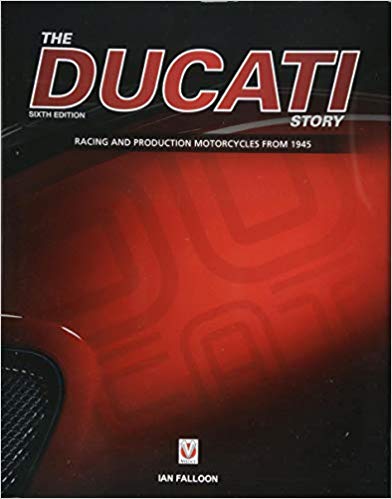
The Ducati Story is brought right up to date in this new edition of Ian Falloon’s authoritative book, covering the complete history of the marque. Initially under government control, Ducati went through several decades of ups and downs, characterised by dubious managerial decisions. Held together by the great engineer Fabio Taglioni, the father of desmodromic valve gear, Ducati produced some of the finest motorcycles of the 1950s, 1960s and 1970s: the Marianna, desmo 125 single, Mach 1, 750 and Pantah. Taglioni also instigated Ducati’s return to racing, and victory in the 1972 Imola 200 was the turning point. Mike Hailwood rode the 900 Ducati to victory in the 1978 Isle of Man Formula One race and Tony Rutter took four World TT2 Championships.
Cagiva purchased Ducati in 1985, bringing a new engineer, Massimo Bordi, and new designs – most famously the Desmoquattro. In various guises, this model dominated the World Superbike Championship during the 1990s, particularly in the hands of Carl Fogarty. Landmark models included the 916 and Monster, and, with the sale of Ducati to the Texas Pacific Group in 1996, the company continued to grow. The racing programme expanded to MotoGP and new model families were introduced. With control taken by the Italian company InvestIndustrial in 2006, Ducati embarked on the next era of development, Casey Stoner winning the MotoGP World Championship in 2007. Now under the Audi umbrella Ducati continues to thrive.
This new edition includes a brand new chapter featuring all the models from 2012 up to 2018.
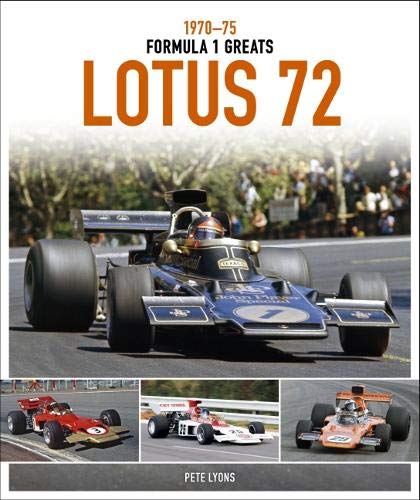
This book, the first in Evro’s new Formula 1 Greats series, covers one of the most revered Formula 1 cars ever made. Introduced in 1970, the wedge-shaped Lotus 72 competed for six seasons, winning 20 World Championship Grands Prix, two Drivers’ titles (for Jochen Rindt in 1970 and Emerson Fittipaldi in 1972) and three Constructors’ titles (in 1970, 1972 and 1973), racing first in Lotus’s evocative red, white and gold livery, then the equally eye-catching black and gold of the John Player Special period. Pete Lyons, Autosport’s renowned Formula 1 reporter for part of the Lotus 72 era, explores the car’s entire race-by-race career in his insightful commentary accompanying a magnificent array of more than 300 photos.
- The 1970 season: after troubled early development, the 72 finally took over from the long-serving 49, its four consecutive race wins enough to secure the World Championship for Jochen Rindt, posthumously after his death during practice for the Italian Grand Prix.
- The 1971 season: with promising youngster Emerson Fittipaldi elevated to team leader after Rindt’s death, great things were expected of the 72’s second season but it proved to be winless.
- The 1972 season: now in black and gold John Player livery, the 72 became far more competitive and Fittipaldi’s four Grand Prix victories made him World Champion.
- The 1973 season: Ronnie ‘SuperSwede’ Peterson joined Fittipaldi to form a dream team and together they won seven races, but because Lotus’s spoils were divided between the two drivers Jackie Stewart was able to come through to become World Champion.
- The 1974 season: still the 72 soldiered on, now as the fall-back car after its successor, the 76, failed to deliver; partnered by Jacky Ickx, Peterson won three Grands Prix.
- The 1975 season: well beyond its sell-by date, the 72 did a final season but by now it was far from effective, with Ickx’s second place in the tragic Spanish Grand Prix its best result.

Details how to select, install, and calibrate high-performance aftermarket brake systems specifically for your classic muscle car.
Other brake system books cover all cars and all applications, but this book is dedicated to muscle cars only! With this volume, you can follow detailed, thorough, step-by-step procedures to install systems on a variety of popular muscle cars from Ford, Chrysler, and General Motors. As a result, you will have a car with brakes on par with the handling and horsepower of modified cars today.
Many 1960s and 1970s muscle cars still carry the outdated and rudimentary OEM drum or under powered stock disc/drum brake systems. These hinder handling agility and stopping performance, and they are a subpar safety system. Muscle cars are meant to be driven aggressively, and the brake system needs to match the performance of the drive train.
The fundamentals of system design, operation, and component function are clearly explained so you understand all principles, equipment, and available kits. With this knowledge, you can select the best brake system for your car and application. However, selecting the right equipment is just the first step. This book delivers detailed step-by-step instructions and photos so you can confidently install an aftermarket high-performance brake system, such as a kit from Wilwood, Baer, CCP, and others on a variety of muscle cars. Covered are aftermarket brake conversions for factory size 14- to 15-inch wheels as well as installs for 16- to 20-inch wheels. You are shown how to select individual components and install master cylinders, steel-braided brake lines, calipers, rotors, and proportioning valves. Whether you’re driving a high-performance street, Pro Touring, autocross, drag racing, or road racing car, these brake system installs dramatically increase performance and safety.
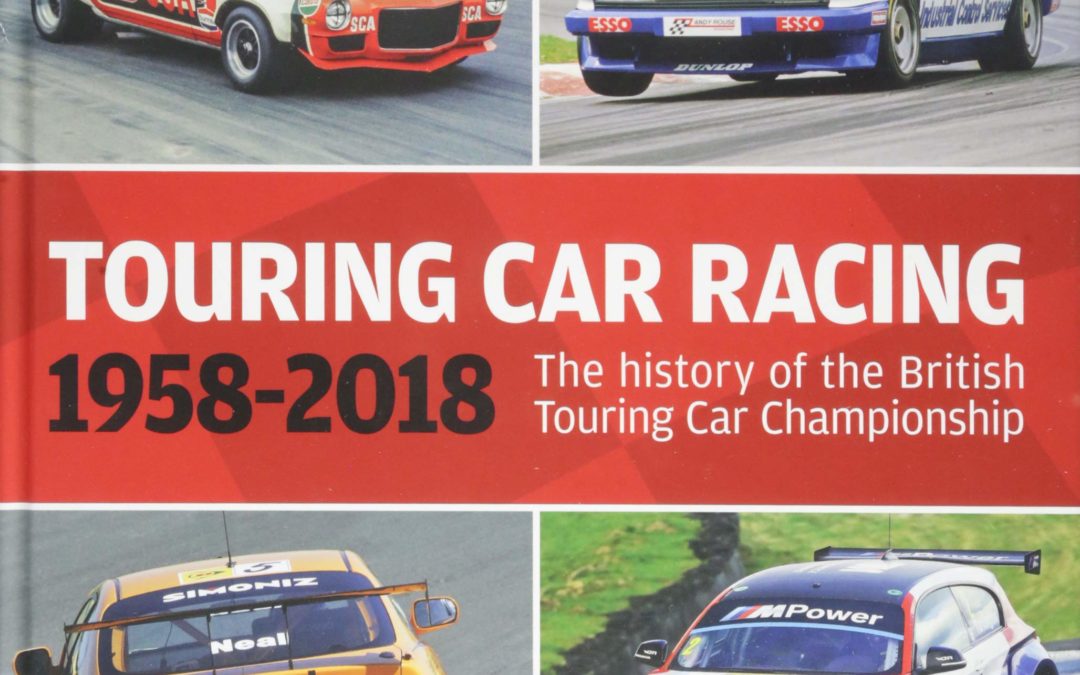
Touring Car Racing, a feast of nostalgia, celebrates the 60-year heritage of the British Touring Car Championship. From the era of Mini Coopers and Lotus Cortinas to the Vauxhall Astras and Honda Civics of recent years, all the highlights of Britain’s ever-spectacular touring car scene are captured in a year-by-year visual extravaganza with over 600 photos and expert commentary. Compiled by long-time touring car journalist Matt James, the book has a chapter for each year featuring a summary of the season, 10 photos showing all the top cars and drivers in action, key statistics and a profile of the champion driver. Anyone who has ever enjoyed touring car racing as a participant, spectator or television viewer will treasure this book.
- The 1950s. The British Saloon Car Championship was inaugurated in 1958 and from the start it was super-competitive, ending in a tie that was resolved by a shoot-out in favour of Jack Sears.
- The 1960s. There were three Mini champions but mainly this was a Ford era, epitomised by Lotus Cortinas (with Jim Clark ever spectacular) and big Falcons, Galaxies and Mustangs from America.
- The 1970s. Smaller classes came to the fore in this decade, with three drivers sharing seven titles — Bill McGovern took three in Sunbeam Imps while two apiece went to Bernard Unett (Chrysler Avenger GT) and Richard Longman (Mini 1275GT).
- The 1980s. Three drivers also bestrode this decade but in a wider range of cars, including Mazda RX-7, Alfa Romeo GTV, Rover Vitesse and Ford Sierra XR4i; Win Percy and Andy Rouse each took three titles, Chris Hodgetts two.
- The 1990s. Overseas drivers arrived in force to mix it with home-grown stars during the highly competitive Super Touring years, the decade’s champions including Joachim Winkelhock (BMW
- 318is), Frank Biela (Audi A4 quattro), Alain Menu (Renault Laguna), Rickard Rydell (Volvo S40) and Laurent Aïello (Nissan Primera).
- The 2000s. Vauxhalls were the star cars, taking six titles, while the decade brought three double champions in the form of James Thompson (Vauxhall Astra), Matt Neal (Honda Integra) and Fabrizio Giovanardi (Vauxhall Vectra VXR).
- The 2010s. Yet more variety and brilliant racing has characterised the current decade, with Gordon Shedden becoming the winningest driver with three titles in Honda Civics.
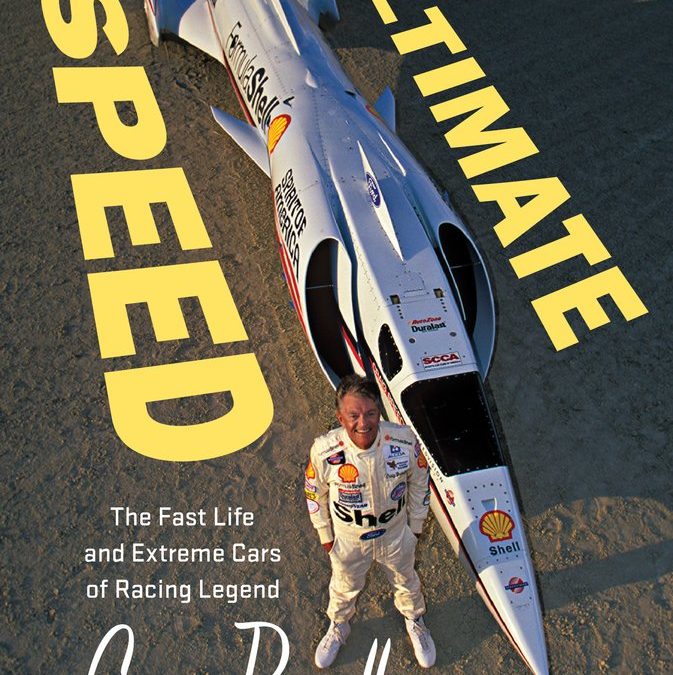
The exciting, true story of an ordinary guy building extraordinary machines in his garage and racing them in the most dangerous game in the world.
An L.A. hot-rodder with a high school education, a family to support, and almost no money, Craig Breedlove set out in the late 1950s to do something big: harness the thrust of a jet in a car. With a growing obsession that would cost him his marriage, he started building in his dad’s garage. The car’s name was Spirit of America. Through perseverance and endless hard work, Craig completed Spirit and broke the land speed record on the Bonneville Salt Flats, setting a new mark of 407 mph in 1963. He went on to be the first person to drive 500 and 600 mph, breaking the land speed record five times. In the early 1970s he turned to rockets and set an acceleration record at Bonneville that stands to this day. He built a jet car in the 1990s, Spirit of America–Sonic Arrow, to go head to head against Britain’s ThrustSSC to be the first to Mach 1. Craig’s subsequent crash at 675 mph remains the fastest in history. Even today, at the age of eighty, he is going strong with plans for yet another Spirit of America racer. The ultimate goal: 1,000 mph.
Ultimate Speed is the authorized biography of Craig Breedlove, with a foreword by Craig himself. A candid revelation of one of motorsports’ most interesting figures, the book is based primarily on countless hours of interviews with Craig and dozens of people connected to his life.
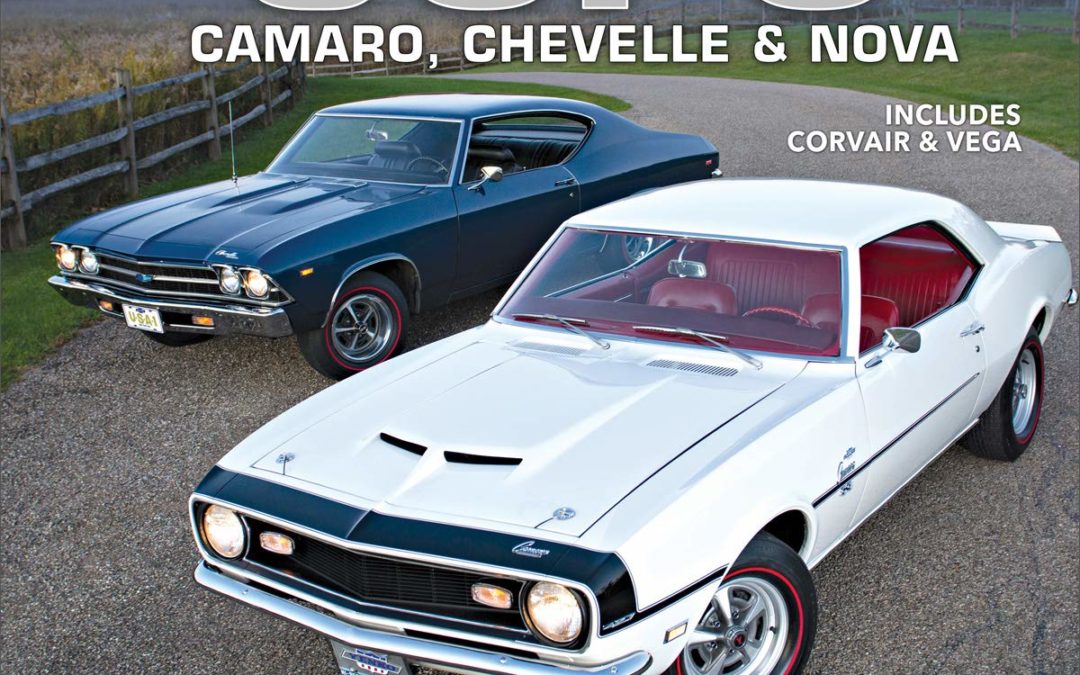
The COPO Camaros, Chevelles, and Novas of the 1960s and early 1970s were the ultimate high-performance GM muscle cars. While few knew about this back channel program at the time, it is now recognized as the origin of GM’s top muscle cars. Dedicated Chevy racers and car owners were determined to compete head-to-head with Mopar and Ford at the racetrack and on the street. But in order to do so, they needed to circumvent the corporate ban on racing and resolve the restriction of 400-ci engines in intermediate vehicles. Don Yenko and some other creative individuals recognized the loophole in the COPO (Central Office Production Order) system at General Motors. The COPO program was designated for fleet vehicles such as taxicabs, but at the peak of the muscle car wars it was used to build the ultimate high-performance Chevy muscle cars.
Some horrific on-track accidents compelled General Motors to drop out of racing, yet GM did not want to allow Chrysler and Ford to steal the glory on Sundays while they stood on the sidelines. As a result, GM inconspicuously ran the Chevy racing and high-performance program through back channels, and COPO was integral part of the program.
Don Yenko became the COPO muscle car program chief architect and champion. He ordered the Corvair through the COPO program and created the Corvair Stinger to mount a SCCA road race campaign. From these humble beginnings, the road map for creating the ultimate Camaros, Chevelles, and Novas was established. Factory Camaro V-8s came equipped with the 350 small-block or 396 big-block, which had to compete with the Mustang Cobra Jets and Mopar Wedge and Hemi cars. In response, building the big-block Camaro through the COPO program was devised. At the factory, Camaros were fitted with the 396 engines and shipped to dealers where the 427s were installed in the cars. From 1967 to 1969, the factory and dealers installed eight different 427 engines, including the all aluminum ZL1 427. Later on, others used the road map to build COPO Novas and Chevelles to similar spec, with similar results. The COPO performance car program did not end with these muscle cars. Yenko even ordered several hundred Vegas through the COPO program, so they could be fitted with turbochargers and raced in SCCA competition.
Chevy muscle car aficionado and author Matt Avery retraces the history of the COPO program and the creation of these premier muscle cars. He has scoured archives and tracked down owners and personnel involved in the program to deliver a comprehensive story and complete guide to the COPO cars. The COPO muscle car and racing program produced a storied and remarkable journey, and author Matt Avery captures all these facets in this entertaining and revealing history.
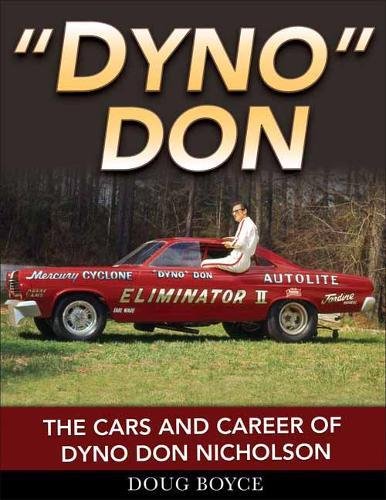
Many fans of drag racing consider the most interesting era to be from the 1950s through the 1970s, the years when the sport really took off. During that period, so much changed from a speed and technology standpoint that people often refer to this time as the golden age of drag racing.
Drivers often became associated with a particular manufacturer, such as Chevy, Ford, or Chrysler through sponsorship, factory team rides, or sometimes simply their own preference. The more successful drivers became household names in the drag racing community. Chevy had Grumpy Jenkins, Pontiac had Arnie “the Farmer” Beswick, Mopar had Sox & Martin and Dandy Dick Landy, and Ford’s most successful driver of the era was the legendary “Dyno Don” Nicholson.
Nicholson’s first wins on a national level were actually in the early 1960s in Chevrolet products. He became extremely successful on the match-race circuit. Then, in 1964, he switched over to Mercury with the new Comet after General Motors enacted a factory ban on racing activities. He won 90 percent of his match races that year. He stuck with Ford and Mercury products and won throughout the 1960s and 1970s, even after Ford also pulled the plug on factory team sponsorship. He made it to the final rounds in nearly 50 national events during that period, in addition to winning championships, awards, and match races along the way. If you are a fan of a certain era of racing, a Ford fan, or certainly a “Dyno Don” fan, this book will be a welcome addition to your library.

“Petty signs with Ford!” Those four words tore through the racing world like a hot knife through butter while loyalists threw their hands up in disbelief. King Richard’s defection was in part because Plymouth hadn’t built a Dodge Daytona counterpart for the NASCAR circuit, in addition to the fact that Petty Enterprises wanted to be the sole racing parts distributor for Plymouth at the time. Plymouth weathered the backlash publically while privately scurrying to create a car to lure Richard back to Plymouth. That car? The 1970 Plymouth Superbird.
Production models languished on salesroom floors due in part to NASCAR having increased the homologation requirement from 500 units to 2,000. These cars were highly specialized, seen as being in excess in proportion to the hottest street cars of the period. Fast-forward to today, Superbirds are highly collectible and are the star attractions at car shows and auctions, pulling top dollar and generating real excitement. What a difference a few decades makes!
Each volume in the In Detail Series provides an introduction and historical overview, an explanation of the design and concepts involved in creating the car, a look at marketing and promotion, an in-depth study of all hardware and available options, and an examination of where the car is on the market today. Also included are paint and option codes, VIN and build tag decoders, as well as production numbers.

This is a highly readable autobiography in which Derek Bell recalls his diverse motorsport life, including his eight classic 24-hour endurance sports car race victories.
Derek Bell has enjoyed one of the most successful, diverse and wide-ranging careers of any British racing driver. In this highly readable autobiography he recalls a life in motor racing that spanned over 40 years and was packed with achievement and diversity. Bell is best-known as the consummate endurance sports car driver who won the Le Mans 24 Hours five times and the Daytona 24 Hours three times, teamed with racing greats such as Jacky Ickx, Hans Stuck and Al Holbert. Besides sports car racing, he has competed in many different cars and categories, from a works seat with Ferrari in Formula 1 in 1968 to rally driving a Vauxhall. This is a uniquely rich and entertaining story that will appeal to all motor racing enthusiasts.
– Early successes and setbacks: climbing the ladder through F3 and F2, leading to F1 with Ferrari; subsequent F1 drives came in McLaren, Brabham, March, Surtees and Tecno cars, but success came elsewhere.
– Personalities and problems: mentors such as his stepfather (‘The Colonel’), Tom Wheatcroft and John Wyer; fellow racers such as Jacky Ickx, David Purley and Mike Hailwood; ‘problem’ exercises such as British Leyland’s mismanaged Jaguar XJ Coupé racing effort of 1976–77.
– Special relationship with Porsche: driving the famed 917 for JW Automotive in 1971; 935 and 936 cars before the Group C category arrives for 1982; works driver of Porsche’s all-conquering 956 and 962 from 1982 to 1987, including winning World Endurance Championship (1985) and World Sports Car Championship (1986); subsequent Porsche achievements in America.
– Love/hate emotions of Le Mans: first visit in 1970, with a works Ferrari 512M; five wins, the first with Mirage (1975), then four in Porsches (1981 to 1987); a proud third place in 1995 after leading for 16 hours, sharing a McLaren with son Justin.
– Endurance racing technique: the physical and mental demands; pacing yourself over 124 hours; the importance of team-mates, exemplified by the partnership with Jacky Ickx that brought three Le Mans wins.
– A new life in the USA: racing more and more in America, where the last of his eight wins in 24-hour races came at Daytona in 1989, aged 47; racing on through the 1990s while in his 50s, mainly in American sports car events; settling to live in Florida.
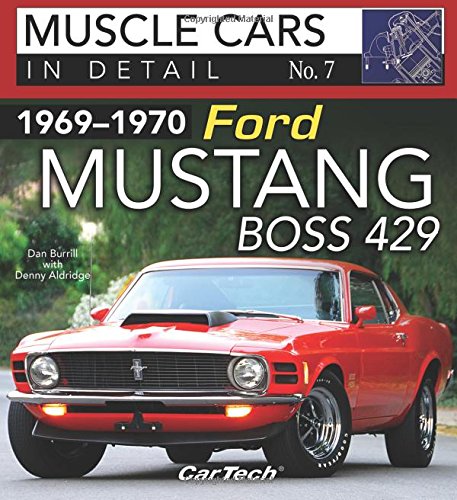
Not to be outdone by Chrysler, Ford had to build and field its own race-duty big-block to compete with the 426 Hemi in drag and stock car racing. In competition trim, the Boss 429 powered Ford and Mercury stock cars to victory in NASCAR and the Mustang to many wins in drag racing. With this exclusive racing pedigree, the Boss 429 is among the most valuable and rare Mustangs ever built.
The project was the brainchild of Bunkie Knudsen, noted stylist Larry Shinoda, and other talented Ford personnel. The semi-hemi Boss 429 was so large, it couldn’t fit in the small Mustang, so Kar-Kraft, a specialty car builder, had to shoehorn the engine into the compact Mustang fastback. Author Dan Burrill collaborated with Boss 429 expert Denny Aldridge to give you the straight story on the car, its special equipment, 429 engine, 4-speed Toploader transmission, interior appointments, paint codes, and options. Also featured is the exciting story of developing this monumental engine, engineering the components and parts to fit the engine and chassis, and assembling the cars.
Each volume in the In Detail Series provides an introduction and historical overview, an explanation of the design and concepts involved in creating the car, a look at marketing and promotion, an in-depth study of all hardware and available options, and an examination of where the car is on the market today. Also included are paint and option codes, VIN and build tag decoders, as well as production numbers.
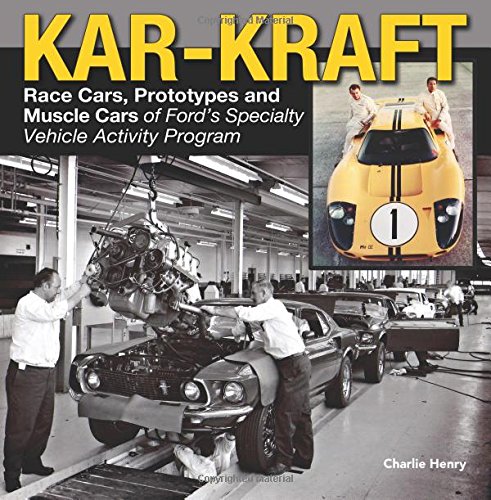
The story of Kar-Kraft began, as did many others in the automotive industry, with an axe to grind. In 1963, Ford was seriously interested in purchasing Ferrari. Ferrari was a legendary brand with considerable success in racing, and Ford saw the acquisition as a great way to be instantly successful in the racing arena. When Enzo Ferrari realized that Ford would not give him complete control of the racing program, he backed out of the deal late in the process. Ford had spent millions in vetting and audits, which then set in motion a vengeful response against Ferrari. The result was the unthinkable: Ford beat Ferrari at Le Mans.
Ford wanted to become competitive quickly, but it did not have the race history or resources in house. To remedy the situation, Ford searched the U.K. for an independent company to help accelerate its race car development. It first settled on Lola Cars and set up Ford Advanced Vehicles. Later, Ford brought its LeMans effort to the U.S. and the Kar-Kraft relationship was established. Although Kar-Kraft was technically an independent company, it really only had one customer: Ford Special Vehicles. Kar-Kraft’s story doesn’t begin and end with the GT 40 that took the win away from Ferrari at Le Mans. Ford expanded upon the program and organized an all-out assault on racing in general. Cars were prepared for Trans-Am, NASCAR, NHRA, and Can-Am competition. Street versions of the Boss 429 were assembled under its roof. And fabled prototypes including the LID Mustang, Boss 302 Maverick, and Mach 2C were all assembled in Ford’s contracted race shop. And then, out of the blue, its doors closed for good on a cold day in 1970.
History tells us that Ford won Le Mans, the Daytona 500, and the Trans-Am championship. But it doesn’t tell us how this was accomplished. Author Charlie Henry (a former Kar-Kraft employee) has enlisted the help of many of his former co-workers to bring you the very first book ever published on Ford’s all-encompassing special projects facility, Kar-Kraft.

There are those still today who see the Porsche 914 model as a ‘funny little car,’ compared to the immortal 911. Granted, in its day professional Rally drivers were not keen on the 914: they were nervous driving it at the limit. Yet the records show that 914s were driven to at least 41 class wins, and at least 71 positions on the other two steps of the podium in Regional, National, and International Rallies.
Racing on the circuits of Europe, 914s came home first in their class, and even took overall victory many times. In the USA, in IMSA GTU championship, in nationals, and internationals, it was the same story – and that’s not counting the multitude of SCCA regional races. The 914 first raced in 1970 … the last? Who knows: even now they’re still used in the USA’s SCCA GT classes.
‘Porsche – the Racing 914s’ is a study in pictures, statistics, factory information, and interviews, that will show the Porsche 914 in a whole new light.

An insight into the design, engineering, maintenance and operation of Ferrari’s iconic 1970s sports racing car.
The Ferrari 512 marked the company’s return to the World Sports Car Championship, and despite being a late entrant, the 512 was a formidable race car. Such was Ferrari’s breadth and depth in motorsport that they were able to mix and match components relatively quickly and the new car was revealed at the 1969 Turin Motor Show although it was only ready to race the following year. Mauro Forghieri, under whose direction the 512 was developed, used a semi-monocoque chassis similar to that of the 612 P Can-Am car, and the car was fitted with a 5-litre V12 engine. The extremely handsome, muscular body was designed by Pininfarina and was available in both sports coupe and spyder format.

Climb inside these stunning muscle car drop-tops, straight from the classic era of American high-performance cars!
Today’s rarest, priciest, and most highly sought-after muscle cars are also the least practical. These are the striking convertibles of the 1960s and 1970s that were optioned out for drag racing. Wide-Open Muscle showcases these rare cars and proves that sometimes it pays to throw practicality out the window in order to make something purely cool and fun to drive.
At the peak of drag racing popularity, it was common knowledge that racers needed the lightest, most rigid-framed cars available. Convertibles represent the exact opposite of that description, so it’s amazing that these drop tops ever emerged amid the circle of full-throttle dragsters. While typical convertible drivers cruised around listening to the latest Lovin’ Spoonful release in the eight-track tape deck, these muscle-car convertibles were equipped for rock ‘n’ roll speed. These topless muscle cars are so rare because few people had the dedication (or money) to buy a vehicle this impractical. They’re valuable because they represent the absolute extreme of the entire muscle-car genre.
Wide-Open Muscle celebrates these rare and fantastic cars in studio portraits using the light-painting process perfected by author Randy Leffingwell and photographer Tom Loeser. It is the ultimate portrayal of the ultimate muscle cars.
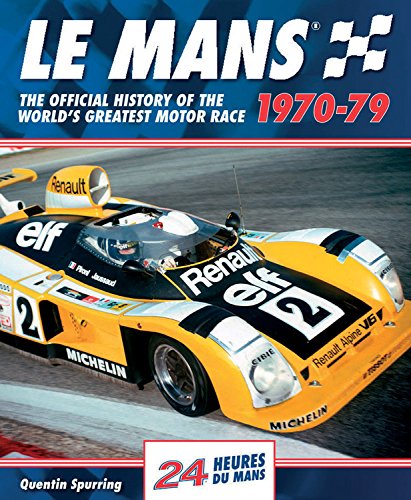
This decade at Le Mans began with the first victories by Porsche, whose awesome 917 racing car, capable of more than 240mph, established a distance record that would stand for almost four decades. One of a hat-trick of wins by Matra, effectively the French national team, was achieved in a famously frantic, head-to-head duel with Ferrari. In 1975, the oil crisis led the ACO to run its race to a ‘fuel formula’, and it was won by the Ford-supported Gulf-Mirage team. Porsche, using motorsport to develop its turbocharging technology, won again in 1976 and in 1977, when Jacky Ickx produced one of the greatest drives ever seen in motor racing anywhere. A massive effort by Renault, again with a turbocharged engine, delivered success in 1978. The decade closed, as it had started, with a soaking wet race that was won by Porsche.
– Highly detailed year-by-year coverage of the decade’s ten races, giving over 30 pages of information and photographs for each year.
– Official status provides a number of unique features, including the reproduction of the full-colour race poster artwork for each year and photographs from the ACO’s archives.
– The images include rare colour, and the emphasis is on photographs that enthusiasts will not have seen before.
– The story of each race is told through photographs and an accompanying commentary.
– Complete data for each year includes technical regulations, entry list, circuit changes (with diagram), lap chart, full results and category awards.
– The whole work is beautifully designed and presented.
– The 1970s boiled down to a Franco-German era, with Matra’s three wins of 1972 & 74 breaking Porsche’s new-found supremacy, which was established so memorably by the magnificent 917 cars that won in 1970 & 71.
